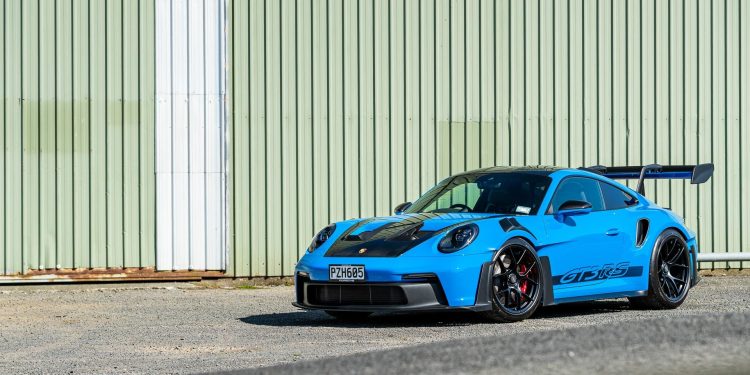2023 Porsche 911 GT3 RS review
Words: Kyle Cassidy | Photos: Isaac Western
Yep, that’s a spoiler alright. The new 911 GT3 RS wears a tail a Le Mans racer would be proud of. But does it all work out on road?
The Porsche 911 model line-up now runs to 26 variants. From the base model Carrera, currently at a substantial $260k, it tops out at $608k for the limited S/T.
And there are many different takes on the rear-engined sports car in between; a Dakar-inspired machine, the Turbos, the Targas, and the GT cars, of which there are three.
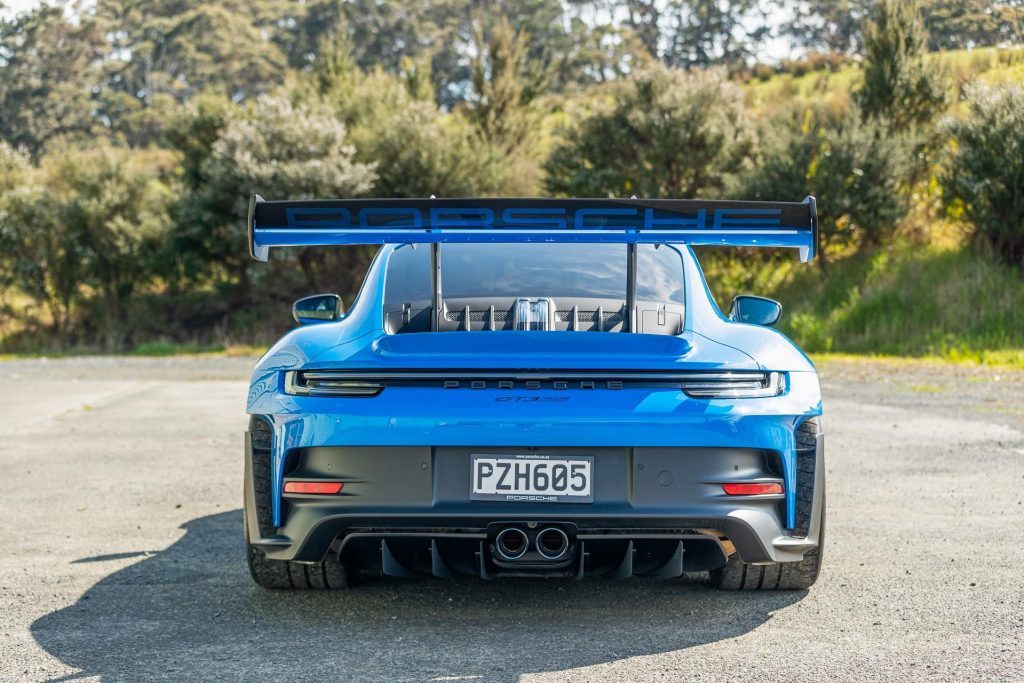
This is the GT3 RS, the most race ready of the lot. But you probably guessed that from the wing it wears. Where the GT3 starts at $384,500 the RS version is $493,500.
As an aside, this car was actually ordered before a raft of price rises for the Porsche line-up (cost of living crisis hitting every echelon of society) and was a relative bargain at $449,300. And you thought the price of eggs had risen sharply!
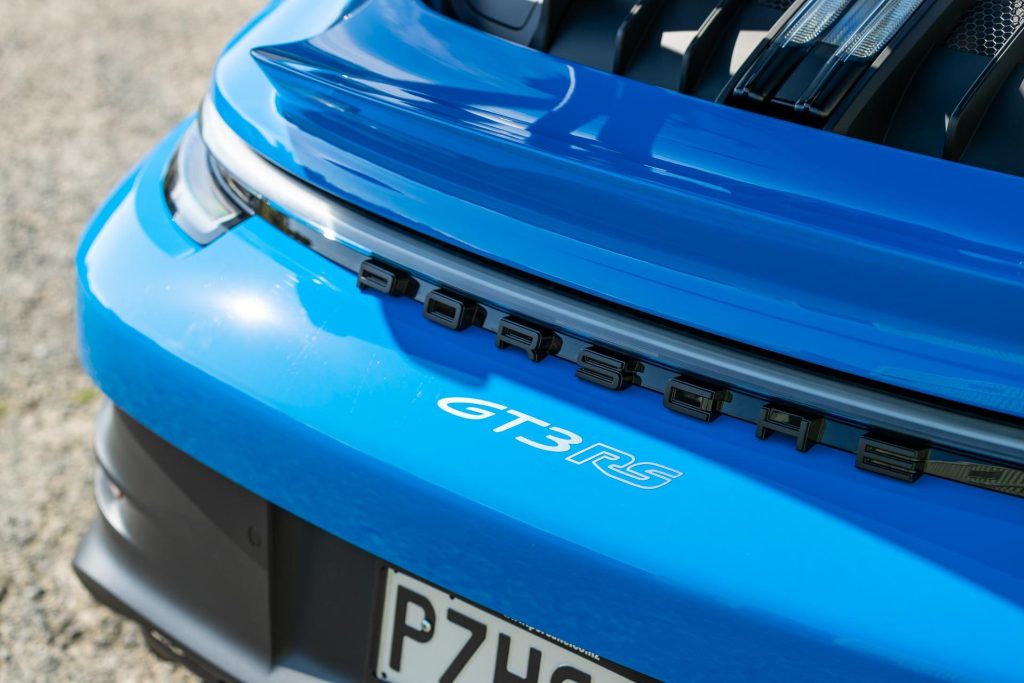
Radical Spoilers
The differences between the bog GT3 and the RS are many and varied, but the abridged version is a little more power and a lot more aero. This thing looks Le Mans ready, dripping in vents, slats, spats, slots, diffusers, splitters; you get the idea.
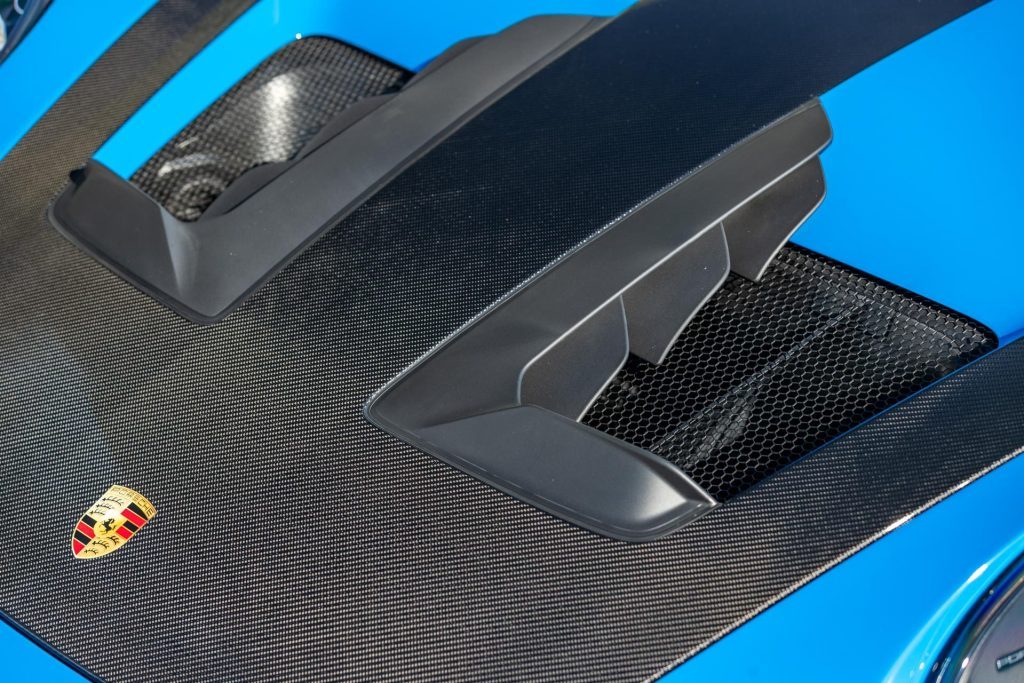
This even has a drag reduction system, the flap on the rear wing able to be flattened at the push of a button for added speed on the straights (drag reduced by 30 per cent).
And there are some tricky active flaps up front underneath that can direct the flow upward through the vented bonnet for more downforce, or channel it under the car for more speed.
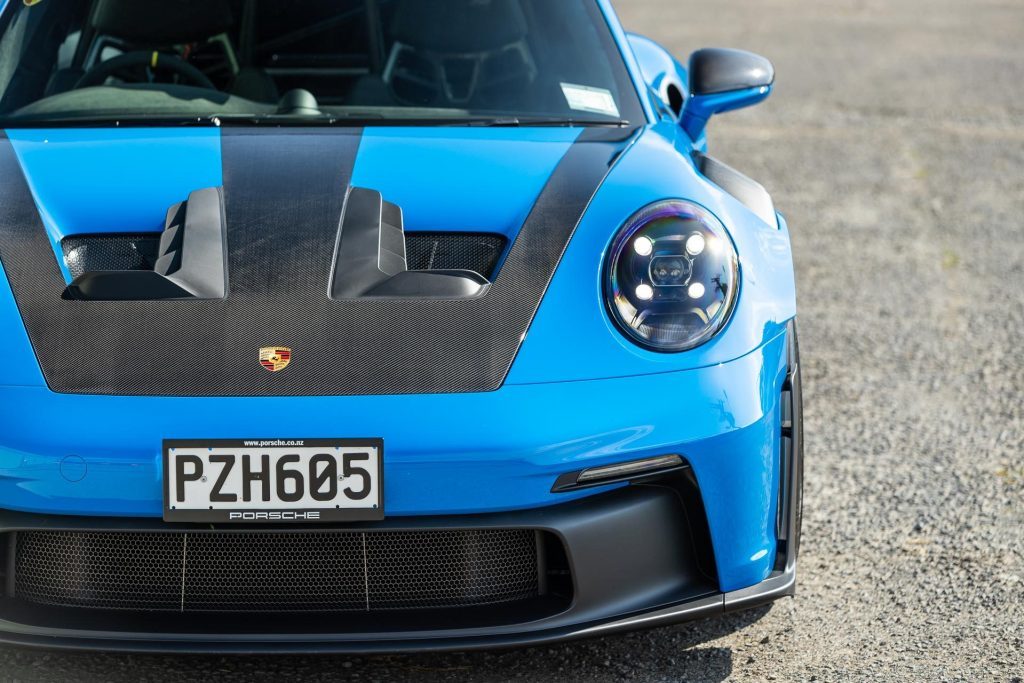
The result is twice the downforce of the old model, and three times as much as what the regular old GT3 can muster. A lot of that is due to the central radiator set-up.
This 911 has no froot, the luggage space now home to the water cooler, the hot air venting out through the bonnet and channeled up over the roof where the fins then keep the warmth from entering the engine intake stream.
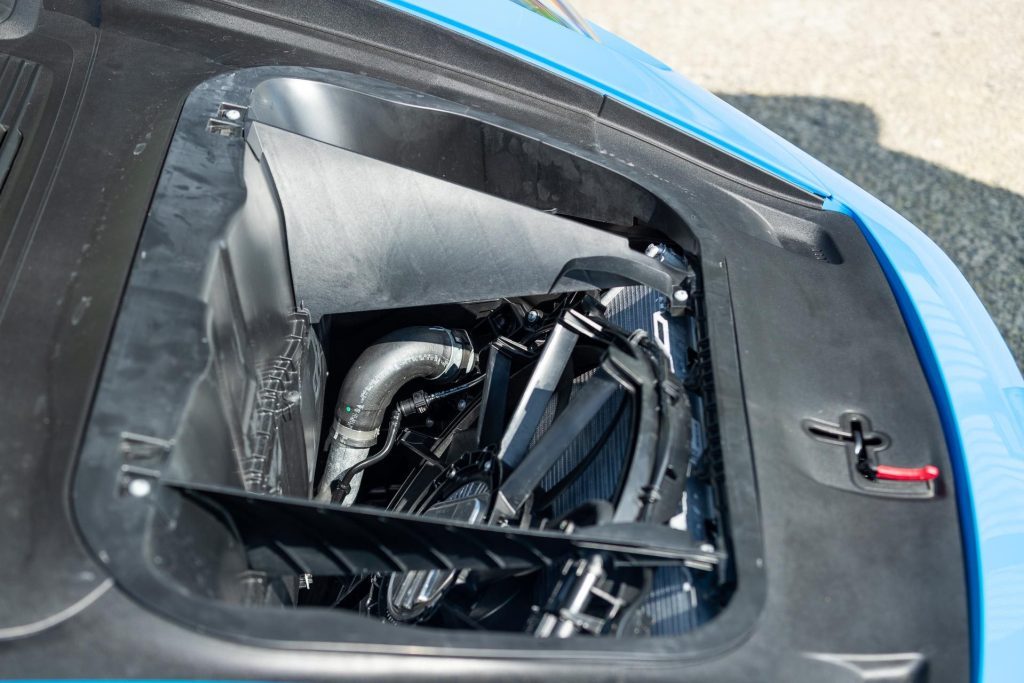
Even the front suspension wishbones have been reformed into aero devices. There’s hardly any front guard left either, vented from the top and the side, while the doors have been reshaped to channel the flows.
That’s not all this particular winged wonder has going for it, as it also has the must-have Weissach pack, all $71,290 of it.
This adds ‘visible’ carbon bits here, there and everywhere, paring back 22kg of mass. The sway bars are made of CFRP and the wheels are tasty forged magnesium items. There’s also a carbon roll cage and a six-point harness for when things really get serious.
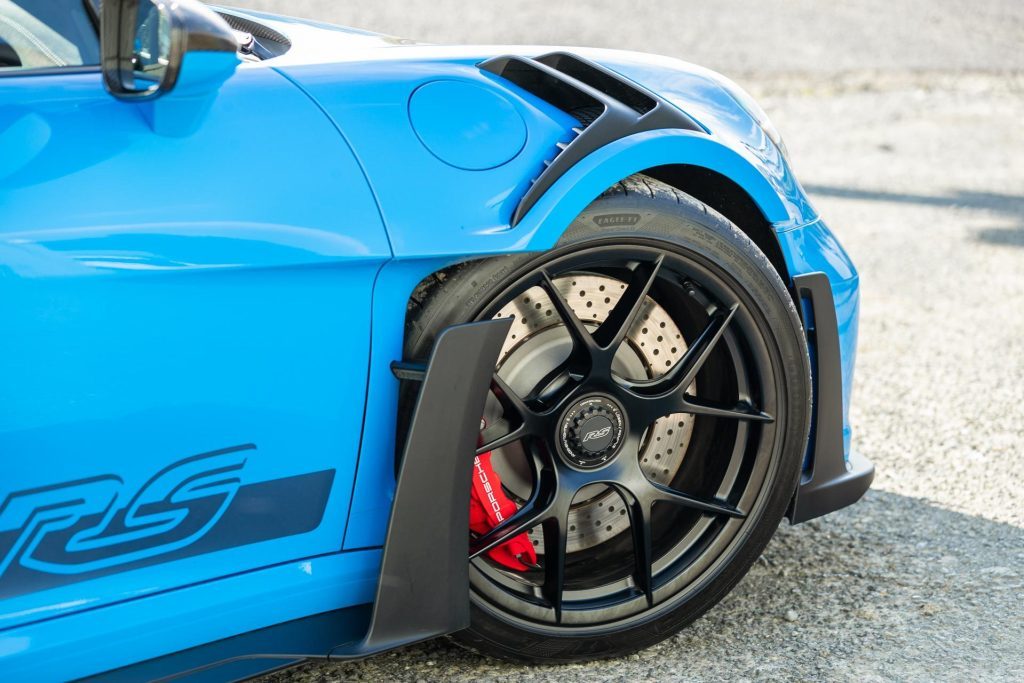
The 4.0-litre pumps out 386kW at a ripping 8500rpm, with 465Nm made at 6300rpm. Porsche says the RS weighs 1450kg and with a lower ratio PDK, hits 100 in 3.2sec.
The same figures for the GT3 are 375kW, 470Nm, 1435kg and 3.4. But this is 10 seconds faster around the Nurburgring at 6mins 44sec.
How hard?
This is a hardcore machine. The additional track width and aeros also add to the sill width and the low set, deep buckets means it’s not as easy to slip into as the regular 911. The seats are pretty unforgiving too.
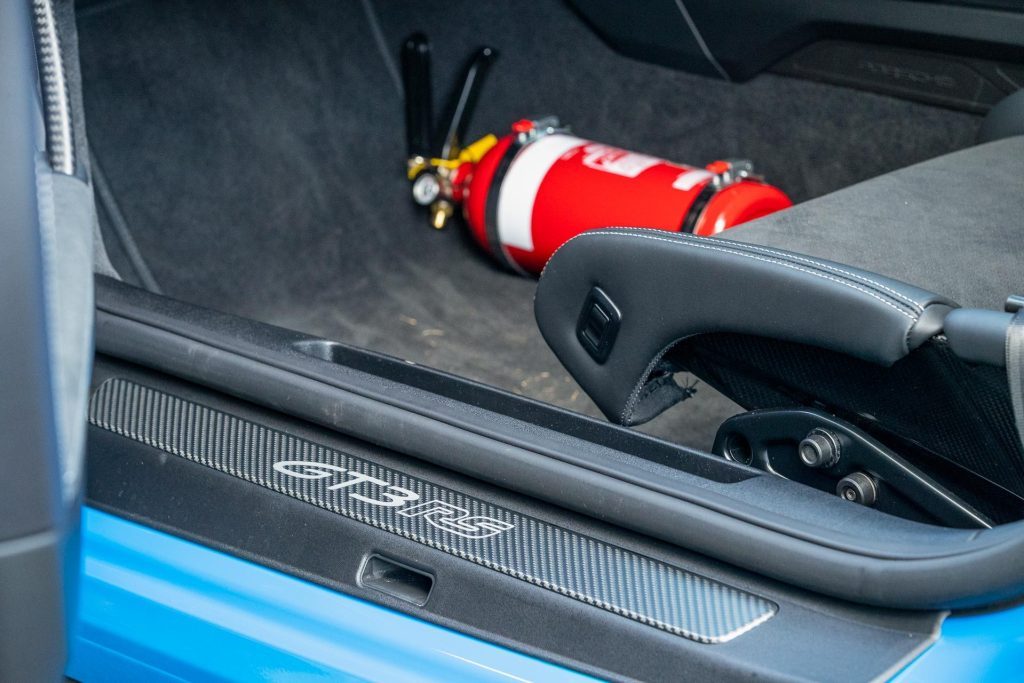
Its 4.0-litre is angry at idle, there are more vibrations in the cabin and a few rattles from the PDK when it engages. The steering is weighty as it turns those mammoth 275 tyres and the ride is lumpy.
But there’s a good turning circle thanks to the rear wheel steering, a hydraulic nose lifter helps negotiate speed bumps, and the outward view is okay.
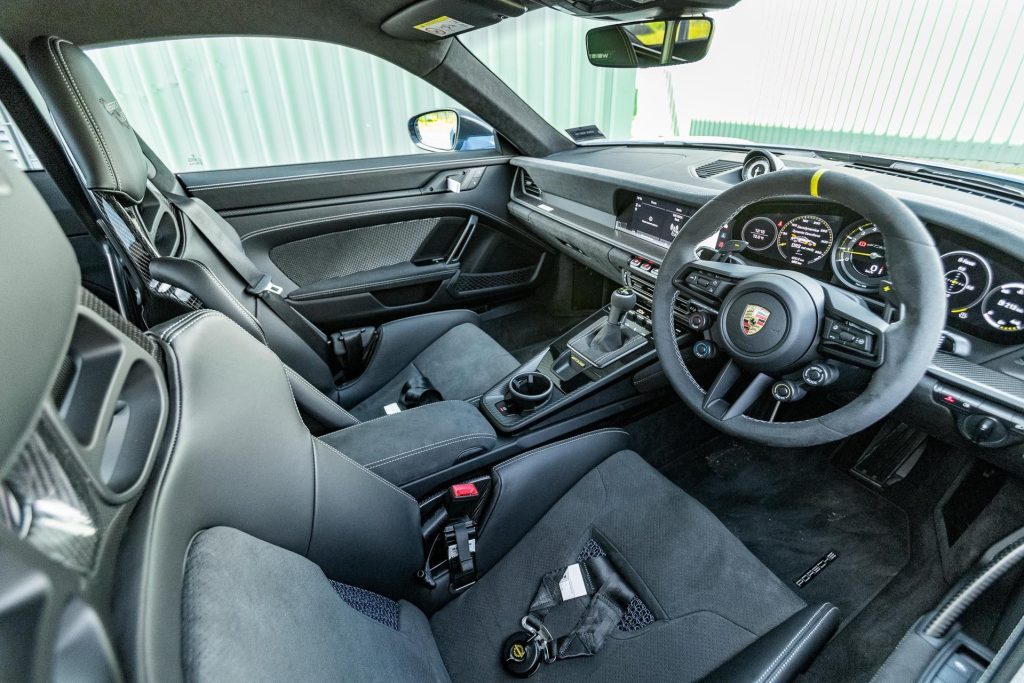
Even rearwards too as the wing is set so high, while you can peer through the roll cage. There’s even a reversing camera. At times you might think your vision is blurring but it’s just the heat haze from the big radiator.
There’s no luggage space with only small bags able to be slotted through the openings of the roll cage into the space behind the seats.
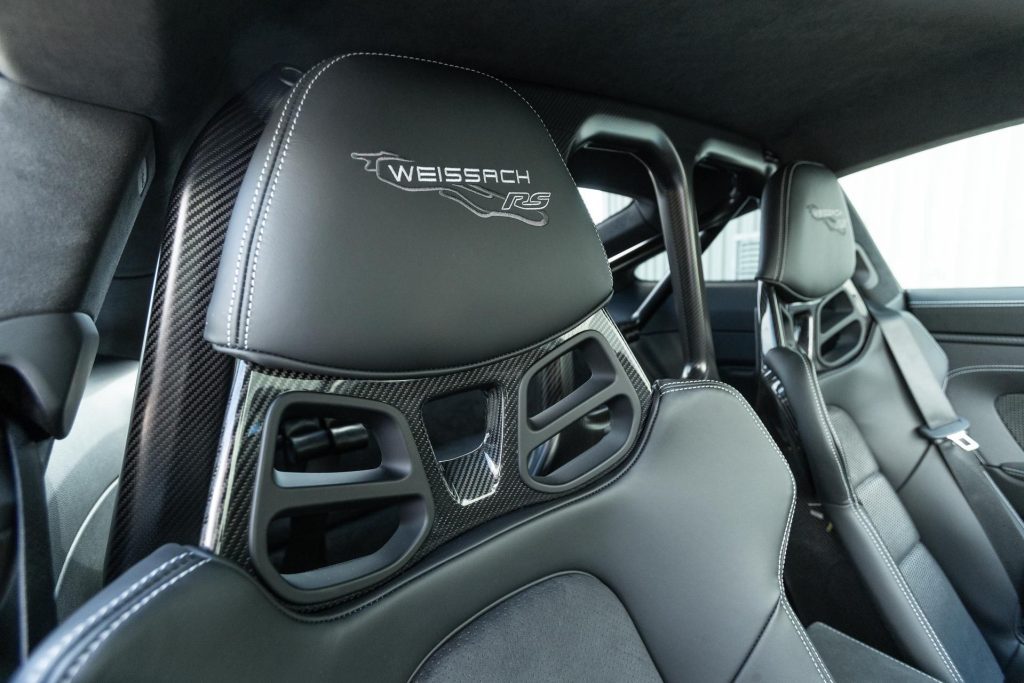
To your liking
Porsche loves a drive mode or two, and this goes next level. Normal, Sport and Track are present but then via the additional three mode switches that are hung off the wheel, you can tune the compression and rebound of the dampers, the level of traction control intervention and the effectiveness of the active torque vectoring (in both power and overrun situations).
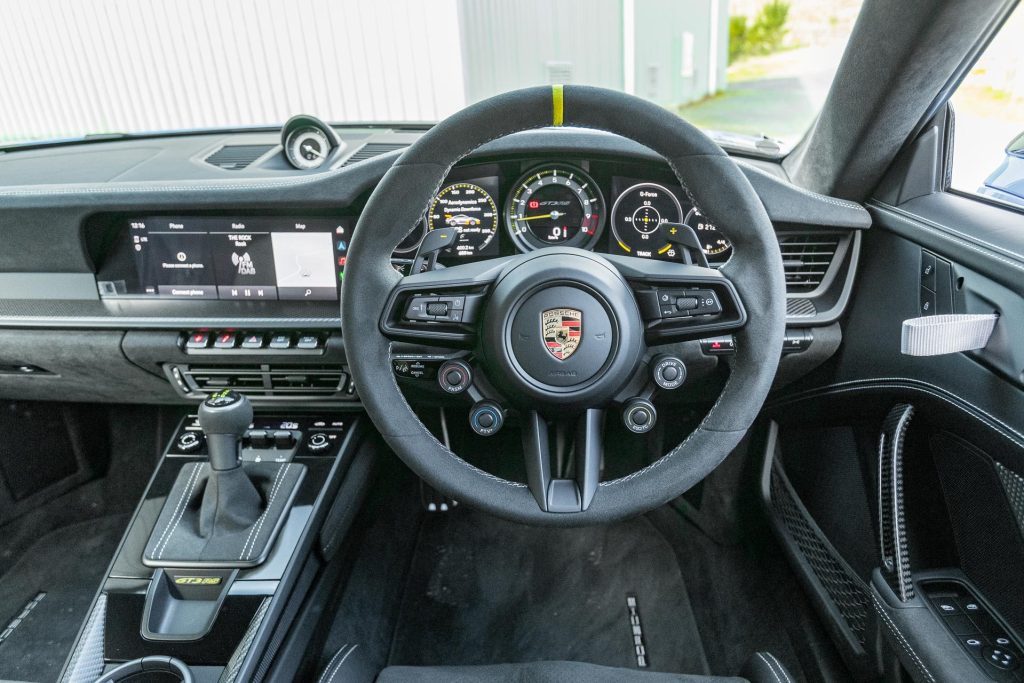
And there’s the DRS button to flatten the flaps. Most of the above only works in Track mode, and as we’d forgotten to book a time slot at Hampton Downs, we headed for some lonely trails, left it in Sport mode, and slackened the dampers back from Track (or frack mode) to Sport.
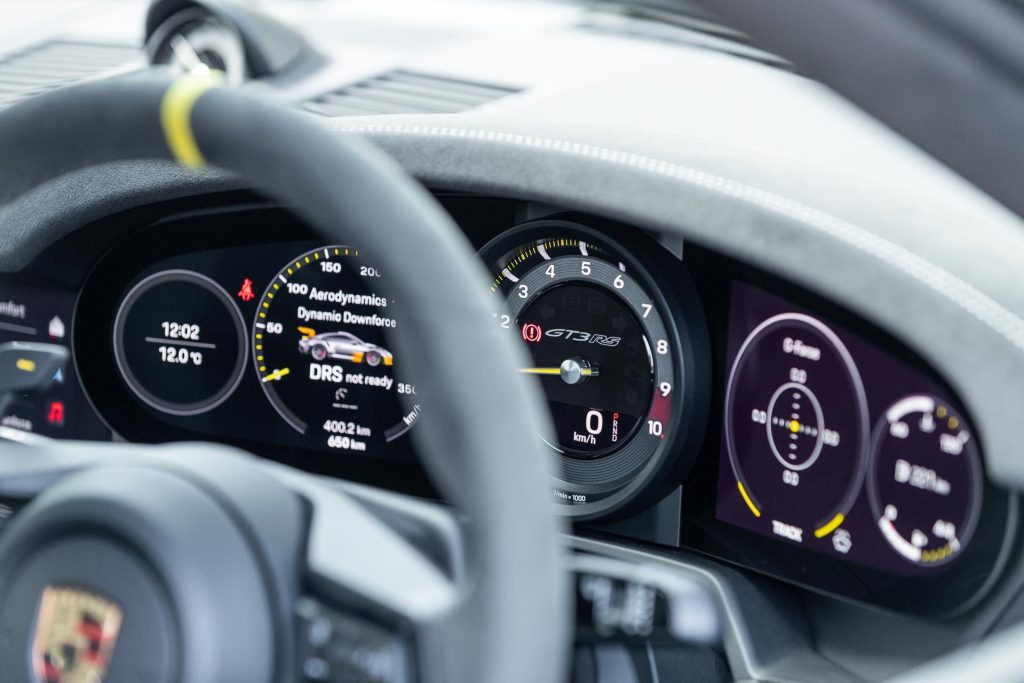
Road worthy?
Even though this is bred for the circuit, you can take to the road in it, sort of. It doesn’t like mere touring though. It feels pretty grumpy when made to trundle along and you deal with an excess of tyre roar and the added road vibes via the ball jointed suspension.
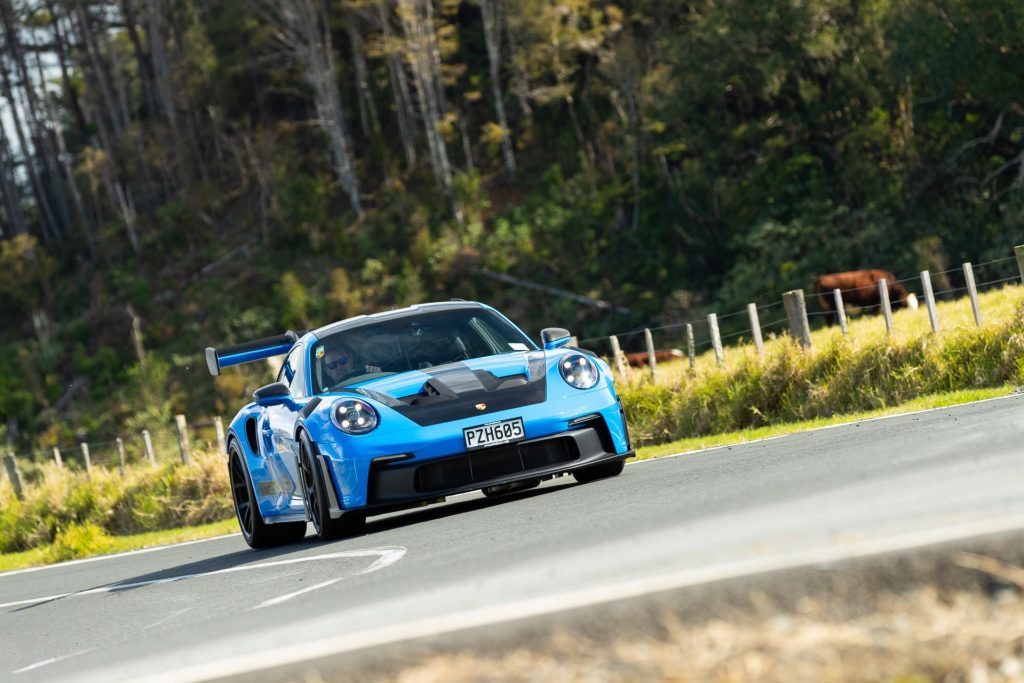
However, give it the jandal and it comes right. That’s when the suspension starts to work, it’s firm but not harsh as it steamrolls the bumps. The steering is hefty yet wonderfully direct; it turns with lightning immediacy. With the help of the rear wheels in the slower turns, it feels crazy nimble.
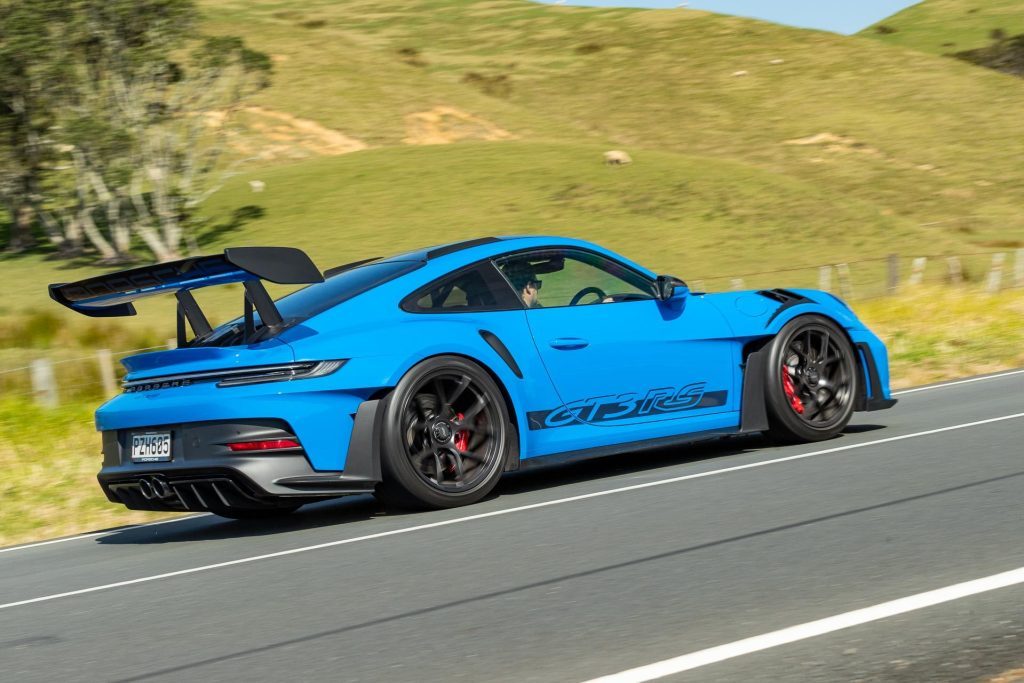
While you don’t get the full effect of the aero at road speeds, it’s doing something because this really sticks in quicker corners. There’s also the immense grip from the tyres, and the resolute roll control working for you as well.
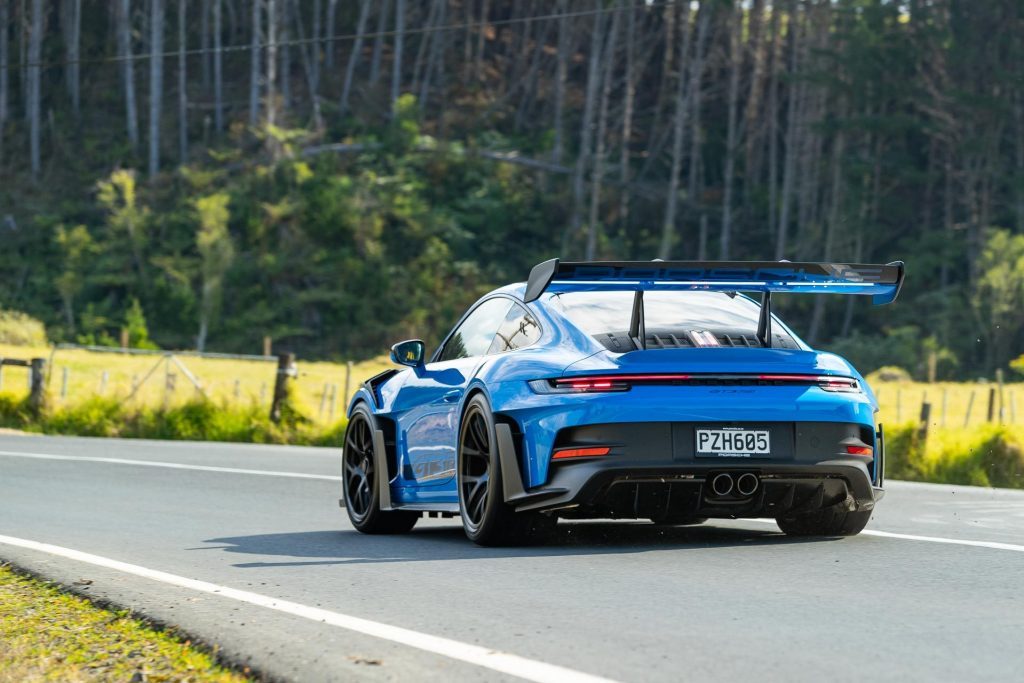
The naturally aspirated engine delivers its power and torque rather elegantly compared with the punch in the face of a big boosted motor, purging its Newton-metres early in the rev range. It needs to spin but it’s ever so willing and man does it sound good on song?
With the masterful PDK stirring things along, it’s easy to keep it in the zone. Even the magnesium shifters seem to have a snappier action about them; everything on this machine is honed.
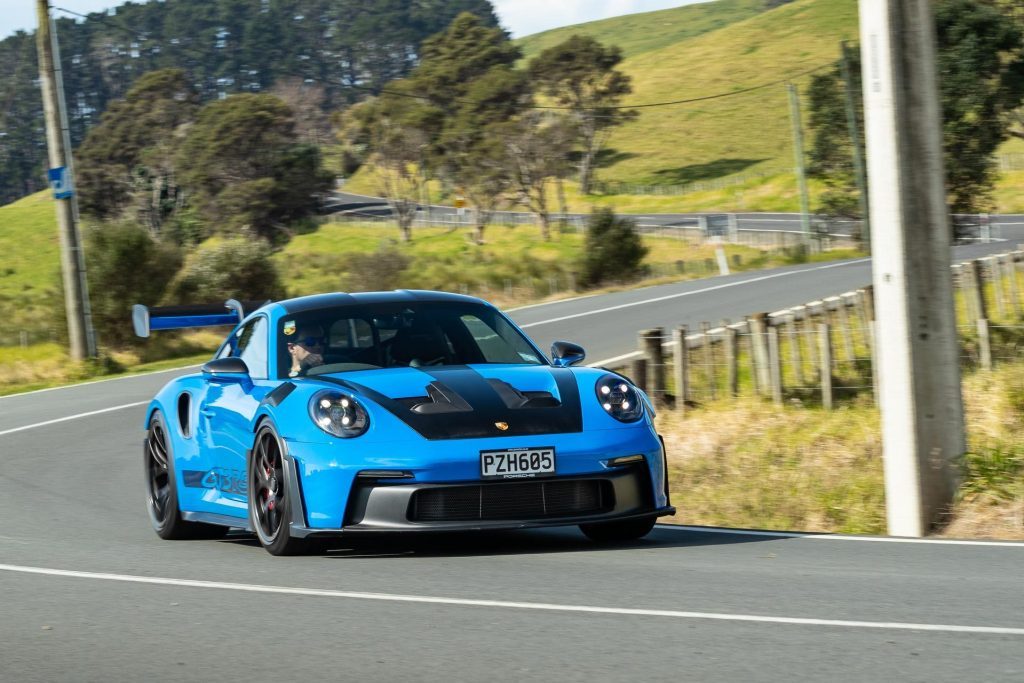
Not that they are really required, such is the tuning of the shifting protocols, but it’s a buzz to snap it down into second heading into a bend before giving it lots of gas, applied nice and early, to get it hauling off the slower bends, the rear tyres doing their job well.
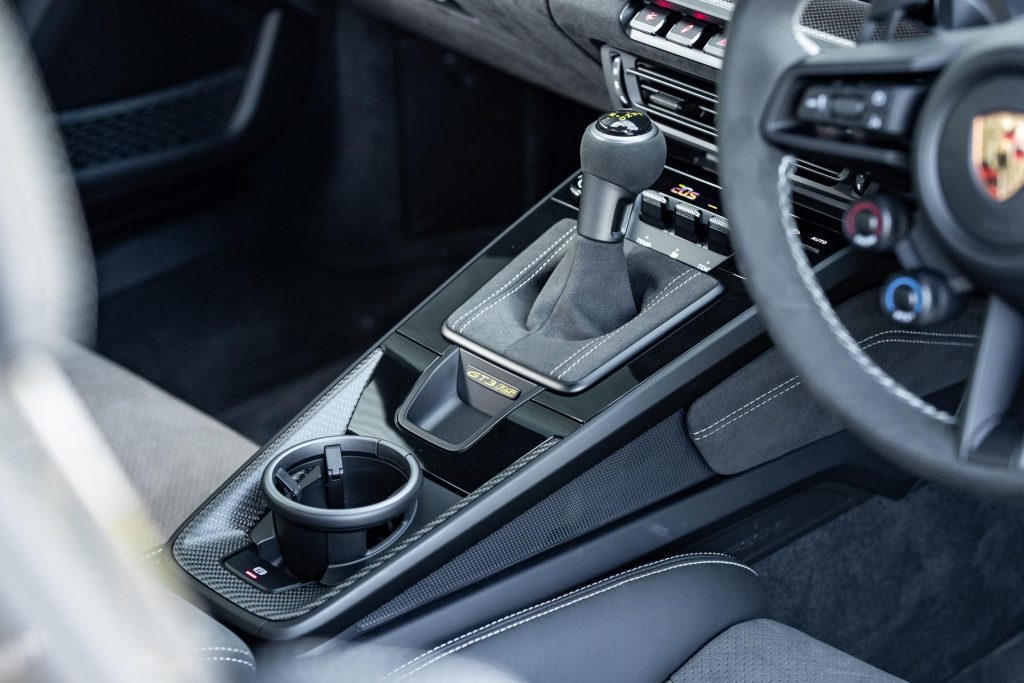
And then there are the brakes with a good firm pedal and bite backed by stupendous stopping power.
The engine response is another endearing character. While it might not possess the wallop of a turbo engine, the reply to throttle inputs, and the engine note, are both museum worthy.
And that raspy melody plays a dual role of cancelling out the masses of tyre roar on coarse chip. It’s better to go deaf listening to a flat six roar than some dead rubber trees.
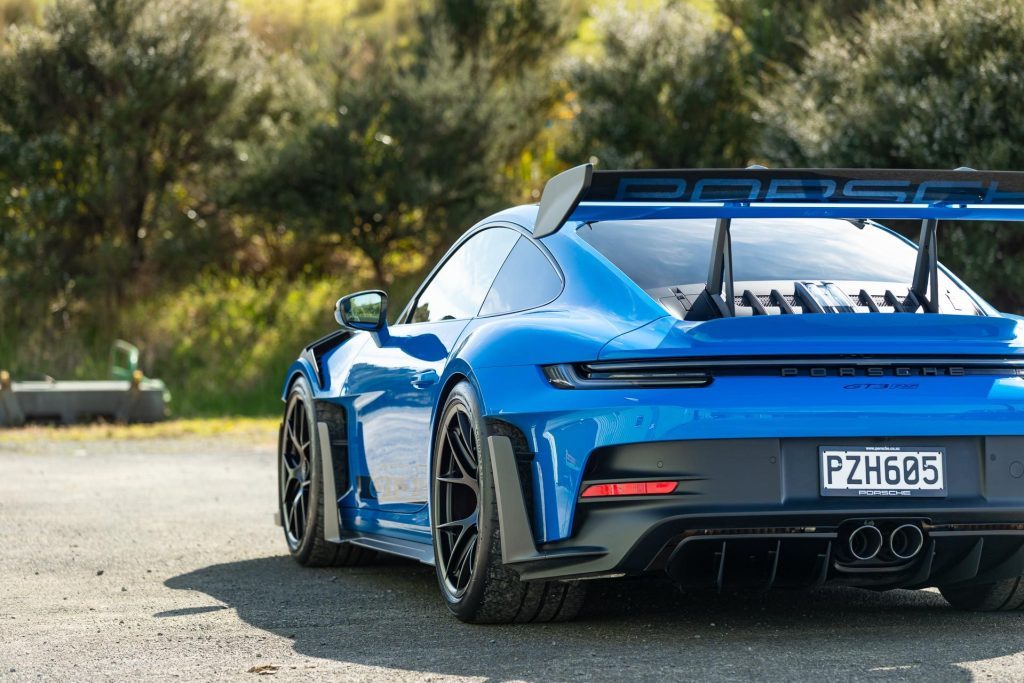
So what is this RS good for?
Track days obviously, something you can drive to the circuit, pound around at race car pace and then tootle back home (via the tyre shop). It would be a good crowd puller at a cars and coffee meet too. Park it up and watch the fan boys go snap happy.
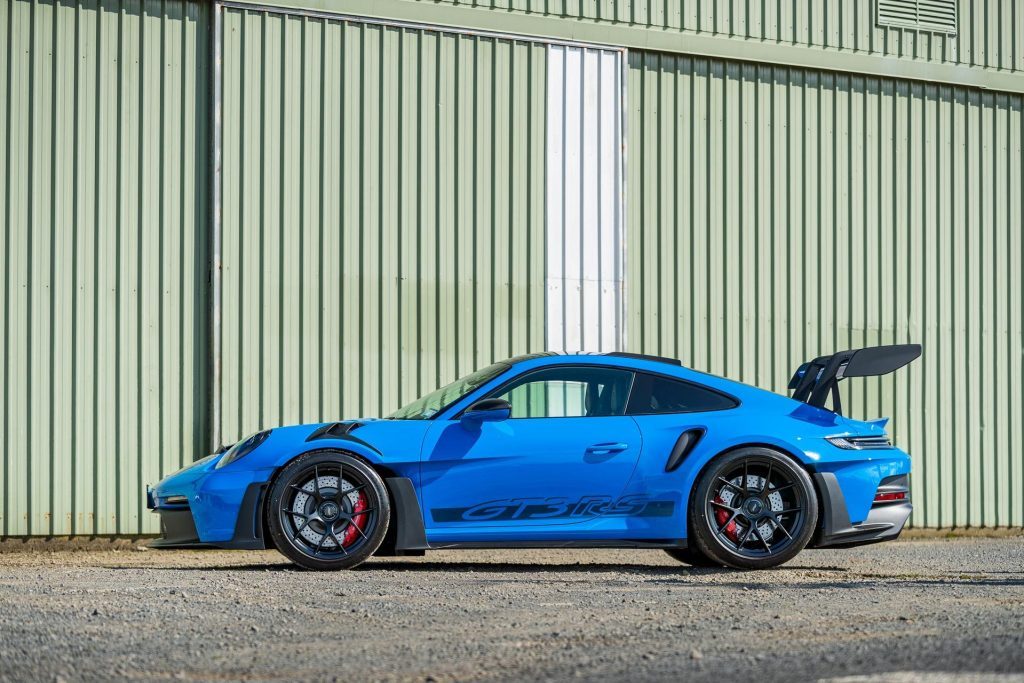
You’ll never go incognito in this, ever. RS models tend to hold their value well, often appreciating. The trouble is getting one with supply purposely limited. It’s a definite symbol of excess, but that’s the 2020s for you.
| Model | Porsche 911 |
| Price | $493,500 |
| Clean Car Discount | Fee – $6900 |
| Engine | 3996cc, Flat 6, DI |
| Power | 386kW@8500rpm |
| Torque | 465Nm@6300rpm |
| Drivetrain | 7-speed twin-clutch / RWD |
| Fuel Use | 14.6L/100km |
| C02 Output | 336g/km |
| 0-100km/h | 3.2sec |
| Front Suspension | Wishbones/swaybar |
| Rear Suspension | Multilink/swaybar |
| Stability systems | ABS, ESP, TV |
| Safety | Carbon-fibre roll cage |
| Luggage Capacity | N/A |
| Tow rating | Not rated to tow |
| Fuel Capacity | 64L |
| Service intervals | 12 months/20,000km |
| Warranty | 3 years/unlimited km |
| ANCAP rating | Not rated |
| Weight | 1450kg (claimed) |


